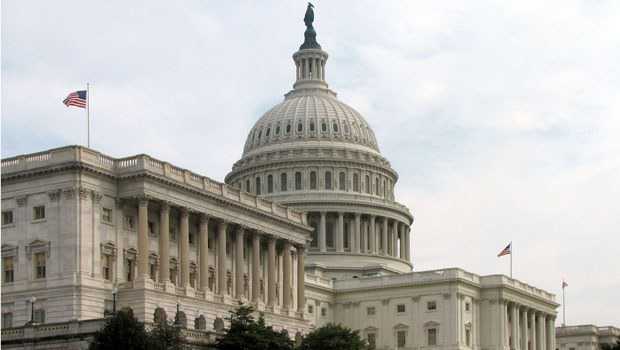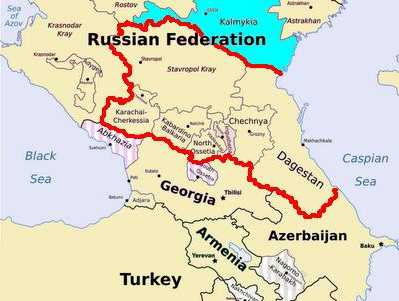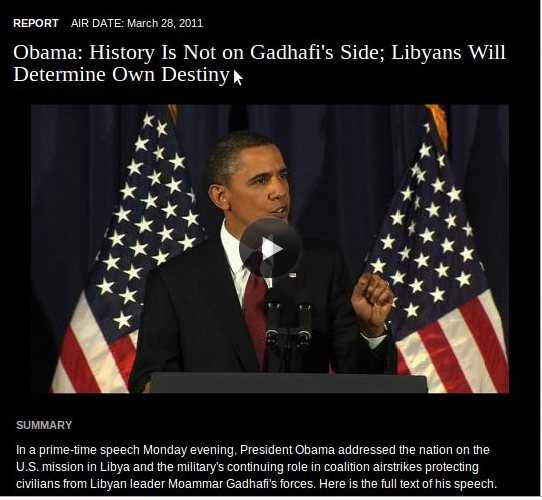SPECIAL BULLETIN
The Fannie and Freddie Rescue
THE BIG NEWS EVENT OF THE WEEKEND
On Sunday, Sept. 7, the Federal government announced that it would be putting Fannie Mae and Freddie Mac into “conservatorship.” The CEO’s of both firms will be replaced and the dividends will be eliminated.
The Treasury Department said it will immediately receive $1 billion in senior preferred stock, paying 10 percent interest, from each company. Over time, the government could be required to put up as much as $100 billion for each if the funds are needed to keep them afloat as losses mount. You can bet that the actual total will be many times that.
The government will also receive warrants representing ownership stakes of 79.9 percent in each company. Apparently that means that shareholders would not be wiped out, but they would lose about 80% of the company. That’s substantial dilution.
Furthermore, dividends on both common and preferred stock would be eliminated, saving about $2 billion a year. Mid-size and small banks own a lot of the many different classes of the preferred for their high dividends. With the dividend eliminated, what is the reason to own them? Some banks will take a substantial bath on these investments.
STOCK MARKET
However, the Treasury will not let these banks fail. Bloomberg reported:
The Federal Reserve and three other bank regulators said that they will work to “develop capital restoration plans” with the “limited number” of smaller institutions that hold Fannie and Freddie stock as a significant portion of their capital.
By ensuring that Fannie and Freddie maintain positive net worth, the Treasury will provide “additional security” to the owners of Fannie and Freddie bonds and “additional confidence” for the holders of their mortgage-backed securities, it said. The Treasury noted that Fannie and Freddie securities are held by central banks and “investors around the world.”
In plain English, the banks will not have to write down the value of these securities immediately.
The former president of the St. Louis Fed, William Poole, told Bloomberg that “I would not be surprised if their total losses aggregate about 5 percent of their obligations” of about $6 trillion. In my view, that’s much too conservative. I think the loss will be at least 20% of the portfolio, which would be over $1 trillion.
Note that the takeover is by the government, not the Federal Reserve. After all, the Fed is not owned by the government, although most people think it is. However,the future status of these firms is still unclear. Treasury Secretary Henry Paulson said that “only Congress” can tackle the “inherent conflict” of serving both shareholders and a public mission. Currently, the plan doesn’t address the question of whether the companies will be nationalized, privatized or kept as government-sponsored enterprises that are shareholder owned.
I think a significant part of the statement is that the Treasury said it would reduce the portfolios of both companies by 10 percent a year starting in 2010. That is a big negative because most private mortgage companies are already not lending. If these two GSE’s reduce lending, instead of expanding it, it means that the housing debacle will continue. And only a turnaround in housing can hope to stop the current credit contraction that is leading the world into a financial crisis.
What is likely to happen to the markets?
The initial “sigh of relief” rally may be much shorter than the bulls would like. Yes, the Fannie and Freddie problems are resolved – for now. The fact that the Treasury took these steps confirms that the liquidity situation of both firms was getting critical. But the rescue had already been built into the markets over the past seven weeks. It was obvious that the government could not let them fail.
So, what’s for an encore? Does it resolve the write-down problems of assets in the banking system? What about the Wall Street firms? And what about the future problems of the private equity firms as their acquired companies have trouble making debt service?
The serious problems are still out there. Everyone knew that these two GSE’s would not be allowed to go out of business. That is no surprise. It only gives a psychological boost, but it will take more than psychology to compensate for trillions of dollars of derivatives melting down.
What will be the reactions in the markets? The dollar will have a brief rest in its strong rise, meaning a brief correction before it goes higher. That will also cause a brief pop in the commodity markets, including the precious metals. Late last week, these markets had met first technical levels which normally causes brief counter-trend moves. No one can know if the rally will last one or two days, or maybe even a week. In fact, it may not even last to the end of Monday. We will see. But an end to the credit crisis is far, far away.
Its important to remember that everything that the Fed and the U.S. Treasury have done over the past 12 months, which includes the Fed using half its balance sheet, i.e. $400 billion of Treasury securities, has not resolved anything, but only prolonged the inevitable.
The major indices last week started breaking down to new bear market lows, unemployment is soaring, and the economy is in a certain recession which the guys with their Ph.D.’s won’t recognize until next year.
The ill-defined Fannie and Freddie bailouts won’t be any different. It’s like using an aspirin to fight terminal cancer.
THE SILENT CREDIT CRUNCH AND THE ECONOMY
While the bullish analysts tell you about the good earnings of companies, and the exciting “widgets” they make, and the virtually unlimited demand for them, they totally ignore the primary driving factor in economies and investment markets, i.e., credit availability. Without credit, economic growth comes to a screeching halt.
And that’s where we are now. Most banks can’t lend because they are close to their capital reserve requirements. They must raise more capital, which is very difficult, or just stop lending and call in loans.
Major firms, such as Lehman, Fannie Mae, Freddie Mac, GM, Ford, etc. are totally unable to raise long-term capital to strengthen their balance sheets. Their preferred stock yields, and yields on long-term debt, are sky high, implying that the market believes they will not be able to survive. The preferred issues yield from 13%-18%. They can’t raise new capital issuing new preferred at these yields, as it would accelerate their demise. GM’s short-term debt is now yielding well over 20%. Investors obviously are not worried about the return ON their money, but OF their money.
Apparently, many investors are being fooled by the $4-5 billion write-offs repeatedly taken by large financial firms. The amounts seem manageable, so they don’t worry. But you have to add them up. For example, MER wrote down $5.5 billion last October. It got a capital injection from Singapore to compensate. However, at this time, the write-offs of MER amount to $48 billion.
Hundreds of billions of dollars in short-term financing used to be conducted in the commercial paper (CP) market. Consider these Federal Reserve figures on commercial paper outstanding: The “asset-backed” CP outstanding has plunged by about $500 billion dollars, or 40%, from last year’s peak of about $1220 billion. That’s the biggest decline of any credit market in history. How can anyone believe that it won’t cause a serious recession?
However, there is a small positive, namely that “non-financial commercial paper” has seen a rise lately. This is the CP issued by large, non-financial companies. It means that someone is able to raise money in the commercial paper market.
But it’s the banks that usually provide credit to smaller and mid-size firms. They are not able to do so now except on a minor scale. And that’s where the problem lies. During the 14-year stagnation in Japan, the banks could basically not lend because they were still loaded up with all the bad loans created during the 1980’s bubble. Their government should have created a mechanism to get those bad loans out of the banks so that they could lend again. The Fed knows the Japanese problem, and is trying to make sure that it doesn’t happen in the U.S. Their answer is “Term Facilities,” where the Fed trades liquid U.S. Treasury paper it holds for the illiquid paper assets held by the banks. But these are loans, not permanent capital infusions.
While the Fed holds these securities, they continue to lose value. Wouldn’t the banks be smarter to just dump them before they become worthless? They probably hope that eventually the Fed, or the Treasury, will just keep them, because reversing the swaps would mean instant bankruptcy for the banks, as they have to write down the value.
Values of all these paper “assets” are shrinking. Merrill Lynch recently dumped its CDO’s, which was a smart move. These CDO’s were declining every day, and finally MER decided to get a dwindling asset off of its books before everyone else decides to dump their own holdings.
Mortgages held by financial institutions are losing their value on a weekly basis. The huge bond investment firm, PIMCO, estimates that $5 TRILLION of mortgage loans are in the “risky asset” category. That’s about 40% of all mortgages. If you are one of the bulls, just think, how can the Fed, or the Treasury, bail out $5 trillion in bad mortgages?
RAISING RATES? IDIOTIC!
The credit crunch is worsening, yet a number of economists, including some presidents of Federal Reserve districts, are urging the Fed to raise interest rates. This is a great argument for not letting human beings be in charge of something as important as setting interest rates. The markets can do a much better job. The hawks on rates fail to see that the “low” Fed Funds rate of 2% has nothing to do with market rates, which is what the average person, and the average corporation, pay. The low Fed Funds rate creates a steep yield curve, which allows banks to improve their profitability. Higher rates will cause more bank failures. Is that what we want?
This technique of creating a steep yield curve helped resolve the banking crisis of 1990-1991. Banks borrow at the low short-term rates and invest the money into much higher-yielding U.S. Treasury bond rates, thus making a nice profit. That is also the reason that the prices of these Treasuries continue to rise, totally confusing economists who have been saying that bond prices should decline because of higher inflation. These economists just don’t know how the markets work.
The number of business bankruptcy filings rose 42% in the 12-month period through June 30. The numbers are still relatively small, but the trend is definitely negative.
GMAC and its Residential Capital LLC home lending unit announced that they plan to fire 5,000 employees, or 60 percent of the staff, and close all 200 GMAC Mortgage retail offices because of weak real estate markets. Loans originated by outside brokers through the company’s Homecomings unit will cease and business lending will be curtailed, the company said.
And that’s how credit becomes tighter.
Ford reported that domestic sales fell 27% in August. That’s the 21st decline in 22 months. Ford is reducing its planned second-half production in North America by 50,000 vehicles. In July, sales of U.S. carmakers declined to the lowest sales rate in 16 years.
Meanwhile, Nissan of Japan reported that its sales gained 14%. What’s wrong with Detroit management?
REALITY IS NOW BECOMING RECOGNIZED—BUT SLOWLY
We are now coming to the phase of the bear market and recession where there is a realization by the majority of the investment establishment that the credit crunch is accelerating. Such an acceleration acts like an avalanche, where the lenders and other sources of liquidity suddenly realize that their previous “bargain hunting” has resulted in big losses and they are no longer willing to provide capital.
Banks shut their lending windows for two reasons: they don’t have the capital, and they don’t want to take the risk.
Bill Gross, founder of PIMCO, the largest bond firm in the world, and a very astute analyst of the credit markets, was very candid and revealing last week on CNBC. He admitted that PIMCO had been too quick to provide capital to financial firms early this year when they thought the worst was over.
Obviously, they don’t subscribe to our WELLINGTON LETTER, where we warned last year that the bargain hunters were much too early. He said that currently, they and other investment firms are no longer willing to provide capital.
He said that, to resolve the current crisis, the financial markets need $500 billion of capital. This is huge.
No one can provide that except the government. Remember, the investments by the large, foreign “Wealth Funds,” which invest in governmental surpluses, have been investing the amount of $4-6 billion. And they now hesitate to invest more. Well, the $500 billion required is nowhere to be found, except at the U.S. Treasury printing press.
Late last year we said that a capital infusion of that much by the Federal government was the only way to restore confidence, not the small amounts of $20 billion and $50 billion which the Fed actually did provide. Paulson had it right a few months ago when he said that when everyone knows you have a bazooka, instead of a little pistol, you don’t have to use it.
Of course, at that time, most of the policy makers in Washington didn’t even think there was a crisis. Our leaders in Washington are reactive. When the meltdown really gets going, they’ll start scrambling. But wouldn’t it be better for them to come up with a program now, totally avoiding the next crisis?
This is why bargain hunting right now in any asset, except U.S. Treasury bonds, is a sure loss investment. We are seeing the greatest un-leveraging in the history of the world. That means everything gets sold. And when it’s sold, the seller searches for a safe place for that money. The only safe place is U.S. Treasuries. As I wrote in March this year, I believe that we could even see a short period where investors will be willing to get a zero yield on 30-day T-bills, or less, just to have their money safe. Advice: avoid all money market funds which have other than U.S. Treasury securities.
I gave the same advice in the middle of last year. But institutional investors thought they could improve yield by buying
“Auction Rate Securities
” that were sold by Wall Street as being the same as money market funds. Well, now these securities cannot be sold. There is no market.
The next wave of crisis is not far away, even with the rescue of Fannie and Freddie.
(Note: Our next issue will be published in one week and will include the normal, complete assessment of the investment markets, with charts.)
Seminar Appearance, Bert Dohmen
I will be participating at a great seminar in Los Angeles (Century City) conducted by my long-time friend, Donald McAlvany. IT’S FREE! Details:
Don McAlvany and David McAlvany cordially invite you to attend their
FREE
financial and geo-political briefing. Please make plans to attend an in-depth analysis on the following topics:
~ Death of the Dollar: The Ramifications of Losing the Status of the “World Reserve Currency”
~ Changing of the Guard: How to Prepare for a Global Shift of Power
~ Banks on the Brink: Your Money & How Safe Is It?
~ Mega Crash: The Coming Derivatives Meltdown
Hyatt Regency Century Plaza, 2025 Avenue of the Stars, Los Angeles, CA 90067
Tuesday, September 23
rd at 6:30-PM
Call 800.525.9556 x118 to Guarantee Your Place
The seminar is FREE! I will be on a small panel to discuss some of the important situations in the markets and answer questions from the audience.
Greetings,
Bert Dohmen





15 Comments: